Tomahawk Creek Wastewater Treatment Facility
Today’s investment for tomorrow’s impact
The Tomahawk Creek Wastewater Treatment Facility serves 150,000 residents in the surrounding Leawood, Overland Park, Olathe and Prairie Village communities. It is one of six wastewater treatment facilities in Johnson County, Kansas. Due to the increasing population, aging infrastructure and additional regulatory requirements, the previous facility was unable to handle the entire community’s treatment needs. As a result, the county had to outsource some of the wastewater treatment to a nearby facility.
When the Johnson County Wastewater (JCW) team began evaluating alternative options, it was clear that continuing to outsource would be the most expensive long-term solution. After thorough analysis, the team identified the expansion of the current facility not only as the ideal solution to meet their future needs, but also as an opportunity to make advancements to improve the facility’s sustainability and impact on the environment.
ADDING VALUE FROM THE START
The first step was finding the team to turn this plan into a reality. The JCW team selected McCarthy Building Companies, Inc., Black & Veatch
and HDR as the core team and the collaborative delivery method of Construction Manager at Risk (CMAR) with McCarthy serving as the CMAR contractor. When the McCarthy team joined the discussions, 30% of the design was complete. The team immediately focused its energy on identifying opportunities to bring value to the project.
“When people hear the term ‘value engineering,’ the first thing that typically comes to mind is scope reduction,” said Kerry Klausner, project director at McCarthy. “In this particular case, we were able to identify significant savings through value engineering without compromising the design integrity.”
Right off the bat, value-engineering exercises dropped the projected costs by $14 million, and in the first three months of work with the designers, that number grew to $41 million. Those adjustments to the design helped get the project within the budget needed to officially break ground.
Another benefit of the CMAR procurement method was the ability to budget for allowances and contingencies upfront so that as challenges came up along the way, they could swiftly adjust. This foresight helped ensure the team remained on track during COVID-19 challenges and the wettest year in county history.
BUILDING FOR THE FUTURE
The expanded facility needed the technology and infrastructure to keep pace with evolving federal and state water quality standards, but additional upgrades were also incorporated. JCW worked closely with the City of Leawood to address and mitigate potential impacts the facility might have on residents. In addition, several environmental and sustainable practices important to the county were integrated into the design including:
- Integrated activated carbon scrubbing technology used for odor control.
- Beneficial reuse of treated solids, i.e., biosolids that can be applied on farm fields.
- Collection of methane production and reused as a self-sustaining energy source.
It was important to the county to consider how the team could incorporate sustainable practices into the design and construction process, both for right now and the future,” said Klausner. “The result is also enhanced water quality since the water goes into local streams that many residents use for recreational purposes. That’s a win-win.”
Residents will not only enjoy the benefits of improved water quality; flow changes and facility improvements will also reduce future operation costs by $785 million over the next 35 years, helping the county maintain its lower wastewater services rate for Johnson County taxpayers.
INNOVATIONS ABOUND
The expanded facility gave the team an opportunity to take a fresh approach to existing problems. One of the most significant issues with the previous facility was the limited amount of water it could treat before needing to outsource to a neighboring facility. Where the previous facility could once only treat 7 million gallons per day (MGD), the new facility can now accommodate 19 MGD with up to 172 MGD of peak flow treatment capability. This is accomplished through both traditional processes, treating up to 57 MGD, as well as a dual-purpose, disk-cloth filtration system for additional flow. With eight disk-cloth filters, Tomahawk Creek is the largest facility in the world using the technology.
The expansion of the facility only increased the site footprint by 30%, but the complexity and impact of the enhanced facility will be significant. The updated facility includes more than 30 new structures, nine miles of underground utilities, 50,000 cubic yards of concrete and more than 130 installed pumps on-site.
LOOKING AHEAD
JCW has plans to make improvements to all its facilities in the coming years. With the success of the Tomahawk Creek Wastewater Treatment Facility under their belt, the same construction team was selected through a request for proposal to make improvements on the next project – the Nelson Wastewater Treatment Facility, this time from the beginning of the design phase.
“We’re excited to be coming on board from the very start of the design,” added Klausner. “We value the time spent working closely with our partners and find that it improves project results.”
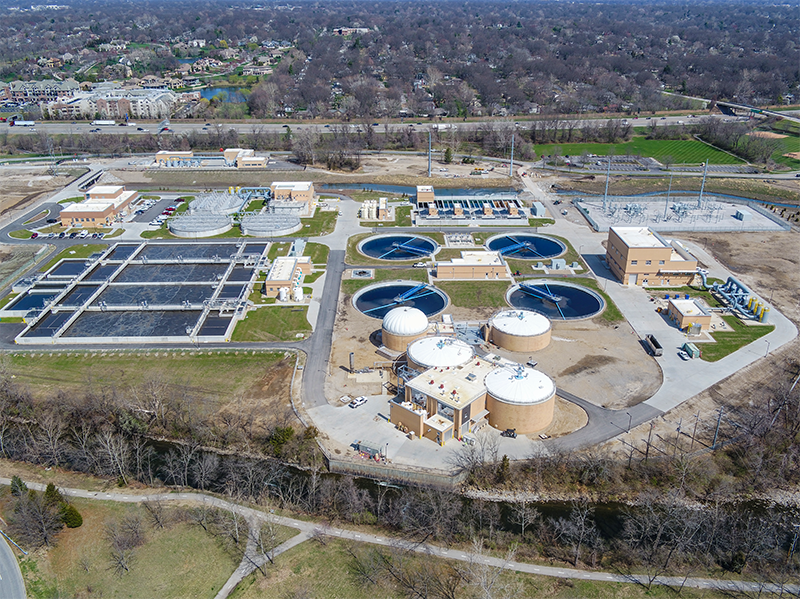
The expanded facility has a 30% larger footprint and includes more than 30 new structures, nine miles of underground utilities, 50,000 cubic yards of concrete and more than 130 installed pumps on-site. Photo courtesy McCarthy Building Companies, Inc.
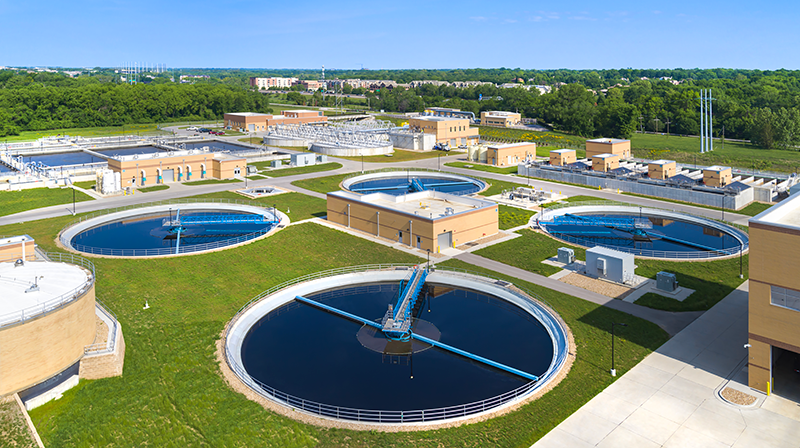
The Tomahawk Creek Wastewater Treatment Facility serves 150,000 residents in the surrounding Leawood, Overland Park, Olathe and Prairie Village
communities. The new facility can accommodate 19 MGD with up to 172 MGD of peak flow treatment capability. Photo courtesy Architectural Photography
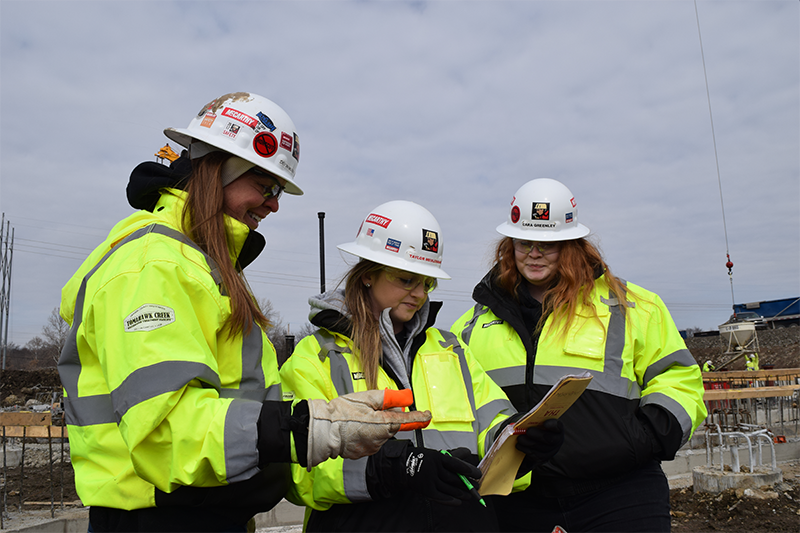
Close collaboration and teamwork were key elements to the success of this project. At its peak, nearly 350 craftspeople were working on-site, which required increased flexibility and communication among all teammates. Photos courtesy McCarthy Building Companies, Inc.
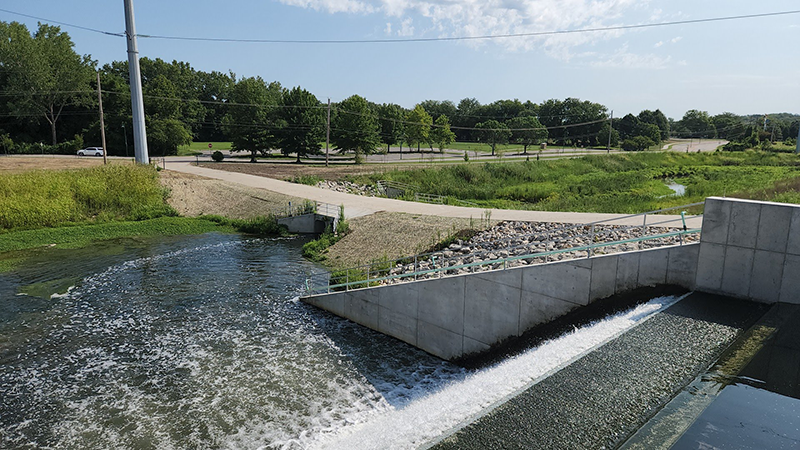
The Tomahawk Creek Wastewater Treatment Facility is one of six wastewater treatment facilities in Johnson County, Kansas. With the success of this project, the same construction team was selected through a request for proposal to make improvements on the next project – the Nelson Wastewater Treatment Facility. Photos courtesy McCarthy Building Companies, Inc.
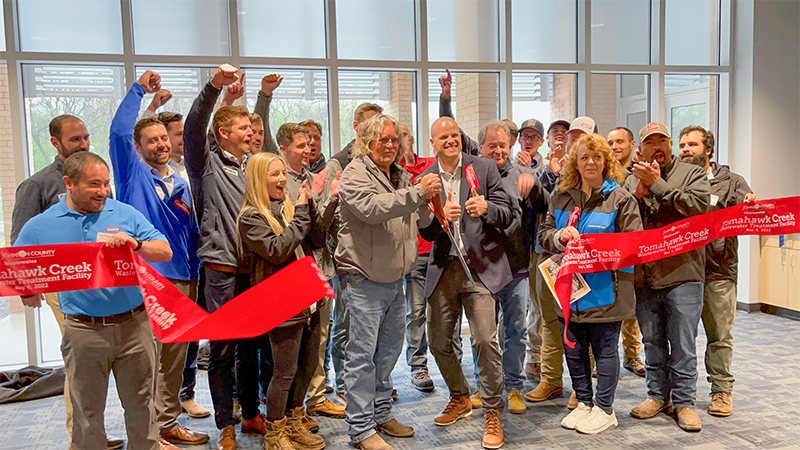
The treated water flows into local streams that many residents use for recreational purposes, which heightened the need for sustainable practices to be incorporated into the design and construction process. Photos courtesy McCarthy Building Companies, Inc.
❮
❯